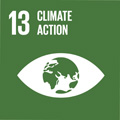- Docente: Fabio Chinnici
- Credits: 5
- SSD: AGR/15
- Language: Italian
- Teaching Mode: Traditional lectures
- Campus: Cesena
- Corso: First cycle degree programme (L) in Viticulture and Enology (cod. 8527)
-
from Feb 18, 2025 to May 20, 2025
Learning outcomes
By the end of the course, the students will:
- know the theoretical and practical basis of sparkling and dessert wine production, together with distillates, principle of distillation and brewing of beer
- acquire the ability to analyze and solve technological problems connected to those productions
- possess the ability to communicate his knowledge with appropriate terminology
- understand the importance of life-long learning process
Course contents
1. Sparkling Wines
- Introduction:
Data on world production, statistics and european framework realted to sparkling wines. The phenomena behind foam, perlage and CO2 dissolution in wines.
- Classic or Traditional Method:
Grapes choice and hervasting procedure. Base wine production: grape crushing and alcoholic fermentation. Wine blending. Secondary fermentation: Yeast choice and sugars addition, importance of yeasts lees, riddling and disgorgement. Bottling and corking.
- Autoclave (Charmat-Martinotti) method:
Grape choice and base wine production. Secondary fermentation in closed tank, isobaric filtration and bottling. Asti Method. Semi-sparkling wines.
2- Passito and Dessert Wines
- Legal framework of Passito and dessert wines
- Grape withering: raisining in the field, in "fruttaio" and in withering chambers. Modification induced in the grapes by the withering.
- Modification induced in the grape by "Noble rot"
- Flor yeasts
- Production schemes and composition of some Passito and Dessert wines: Jerez wines, Marsala, Porto, Tokaj, Sauternes, Amarone.
3- Organic and Biodinamic wines
- Legal framework
- Authorized field interventions and winery practises
- Reduction of the use of sulphites in winemaking
4 - Distillation and Distillates
- Theoretical aspects of distillation
- Distillates coming from grapes and wines: Brandy, Cognac, Grappa
- Distillates coming from other sources: Whisk(e)y, Rhum, Gin, Vodka
5- Rectified and concentrated must (MCR)
- Production of MCR; ion exchange resins.
- chemical-physical characteristics of MCR
- Concentrated must; muted must
6 - Vinegar production
- Technologies for the production of vinegar
- Vinegars with Geographical indication
Tradition balsamic vinegars and balsamic vinegar of Modena
7 - Beer Brewing
- Legal definitions and framework (homebrewing, agricultural brewers, etc)
- Beer production
Malt production: barley seed composition, starch composition, germination, drying and toasting. Pale and dark malt.
Wort production: milling, influence of water, decoction and infusion, filtration, worth boiling, hopping, whirlpool, high and low fermentation, secondary fermentation, fining/maturation and bottling.
Readings/Bibliography
Slides from the lessons, downloadable for UNIBO students from VIRTUALE (https://virtuale.unibo.it/).
Other books for personal deepening:
Rosanna Tofalo, Hervé Alexandre: New Frontiers in Sparkling Wine Production, ISBN: 979-8-89113-562-8, Nova Science Publisher
F. Mencarelli, P. Tonutti. Sweet, Reinforced and Fortified Wines -
Grape Biochemistry, Technology and Vinification, 2013, Wiley ISBN 978-0-470-67224-2
ROGER BARTH, THE CHEMISTRY OF BEER -The Science in the Suds -2013, Wiley ISBN 978-1-118-67497-
Teaching methods
Apart from frontal teaching lessons, seminars will be held by consultants or researcher from other universities
Assessment methods
The course is part of a modular course entitled: ENOLOGY.
At the end of the course, a writtten test will be held, based on 17 questions with multiple choice. Each correct answer gives 2 points (o sum 34 points as a total.
Students can improve their grade via oral examination during the summer session (June and July).
Off-course students or who haven't taken the exam will be examined during the official sessions via oral exams.
Teaching tools
PowerPoint slides and on-line tools provided by the IOL platform from UNIBO.
Office hours
See the website of Fabio Chinnici
SDGs




This teaching activity contributes to the achievement of the Sustainable Development Goals of the UN 2030 Agenda.
